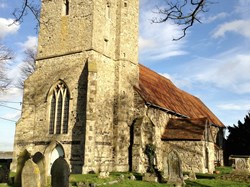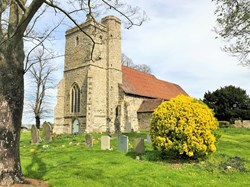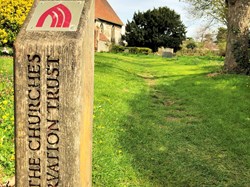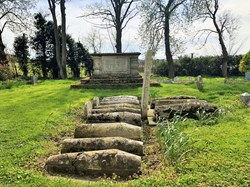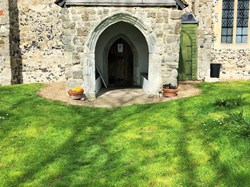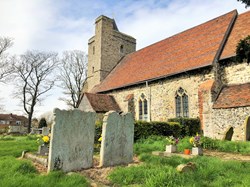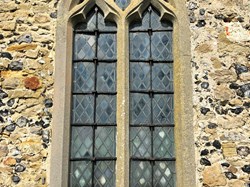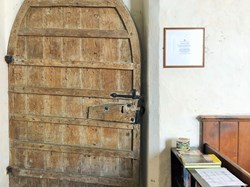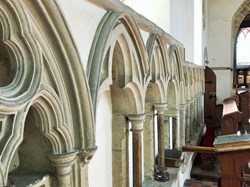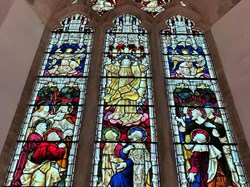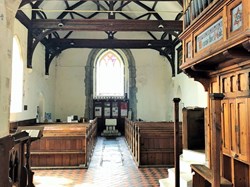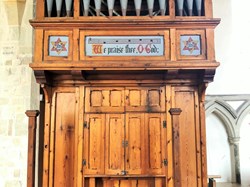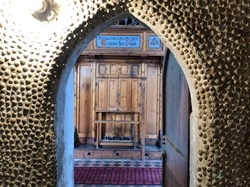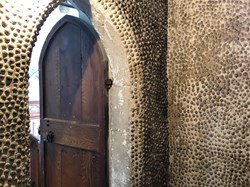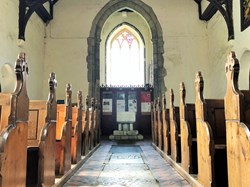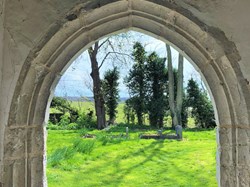St. James' Church
Opening times: 10:00 - 16:00 daily
Managed by: The Churches Conservation Trust
Website: http://www.coolingchurch.org.uk/index.htm
History of St James', Cooling
St James' Church dates from the late 13th century. No evidence of an earlier building survives. It seems likely that the de Cobham family, who held the manor from 1241, were instrumental in its construction. The nave, chancel and the lower part of the tower were part of the initial building phase stretching into the 14th century. The tower was completed to the height at which it now stands by about 1400.
St James' Church seems to have been little altered until the 19th century, when there was a sustained burst of activity in and around the church. The vestry was built onto the south wall, and the porch took on its present appearance. There was also a new pine reading desk, banners for the altar, carpets for the chancel, pulpit stairs and altar kneelers. In the space of a few years, the church was thoroughly renovated.
The Church
The church itself is built of a characteristic Kentish mixture of ragstone and flint, with a variety of other stone, including chalk, also to be seen. The tower was probably the final part of the church to be completed, at the end of the 14th century.
The small stone lean-to structure on the south wall is the 19th century vestry. The interior walls of the vestry are covered from floor to ceiling in the most unusual, yet appropriate form of decoration; they are lined with hundreds of cockle shells, mounted here in the 19th century. This shell was worn as an emblem by pilgrims to one of the most renowned holy sites in Western Europe, the shrine at Santiago de Compostela of St James - the patron saint of Cooling church.
The porch over the current entrance was also rebuilt in the 19th century, after many hundreds of years during which access to the church was through a porch over the north door, which is now blocked up. Inside the church, the large north door is still swinging on its hinges before its blocked-up doorway! Although this north door has not been in use for many years, its construction of braced panels, long hinge arms and huge lock make it an intriguing survivor.
There are six heavily-worn benches inside the church at the west end; these are possibly the original furniture dating back to the 14th century (the other benches inside the church were replaced in 1869).
Halfway between the north and south doors stands the 13th-century font, perhaps the oldest unaltered feature of the church.
The nave gangway is paved with four memorial slabs, one plain and uninscribed, the others of some interest. The first has a brass inscription to a man called Thomas Woodycare, who died in 1611; the second has no brass but only the recess where the plates have been lost, revealing the absence of four figures, an inscription and perhaps a badge. The final memorial displays both an inscription and a brass figure, of Feyth Brook, the wife of John Brook, Lord Cobham, who died in 1508.
Charles Dickens - Great Expectations
St James' Church is well known for its association with Charles Dickens, who lived nearby in Higham, and who is thought to have set the opening to Great Expectations in its churchyard, complete with the row of children's tombstones now inevitably referred to as Pip's graves.
Dickens pictures them as '....five little stone lozenges each about a foot and a half long which were arranged in a neat row ... and were sacred to the memory of five little brothers of mine....'
In fact the Cooling graves belong to the children of two families, aged between 1 month and about a year and a half, who died in the late 18th and 19th centuries.
It is impossible to stand in the churchyard and not feel the impact of that 'dark, flat wilderness ... intersected with dykes and mounds and gates' and the 'distinct savage lair' of the sea (Great Expectations).
See more below
The inspiration for a dramatic Dickens tale...
Charles Dickens used the churchyard of St James' Church as his inspiration in the opening chapter of Great Expectations, where the hero Pip meets Magwitch the convict. The site - on the Hoo Peninsula with marshes stretching north to the Thames estuary, is dramatically desolate and bleak in winter, recalling the sinister opening scene in David Lean's 1946 film of the book.
Here, you can find what have become known as Pip's Graves - the forlorn gravestones of 13 babies that Dickens describes in the chapter as "little stone lozenges each about a foot and a half long, which were arranged in a neat row beside their [parents'] graves".
Inside, the church is light and spacious. There is a 500-year-old timber door that still swings on its ancient hinges - even though it now leads to a blocked north doorway! Another quirky feature is the 19th-century vestry - its walls are lined from top to bottom with thousands of cockle shells - the emblem of St James.
The monuments in the church walls and floor are a fascinating record of those who once lived here. They include a slab with a brass effigy of Feyth Brook, who died in 1508 and was the wife of Lord Cobham, of nearby Cooling Castle.
Church Hire:
If you would like to hold an event or service at this beautiful and historic church, it can be possible. The Churches Conservation Trust, a national charity that protects historic churches at risk and looks after St James, will consider requests subject to certain conditions.
Contact details for Church bookings and enquiries:
Contact name: Abi or Lucie
Region: South East
Email: [email protected]
Phone: 01223 324442
Volunteering Officer: Megan Mitchell
Region: South East
Email: [email protected]
Phone: 07884 436649
Church’s wheelchair visitors:
A ramp is stored behind the main door at St James’ Church to assist wheelchair users. Please remove the mat before use and replace when leaving.
